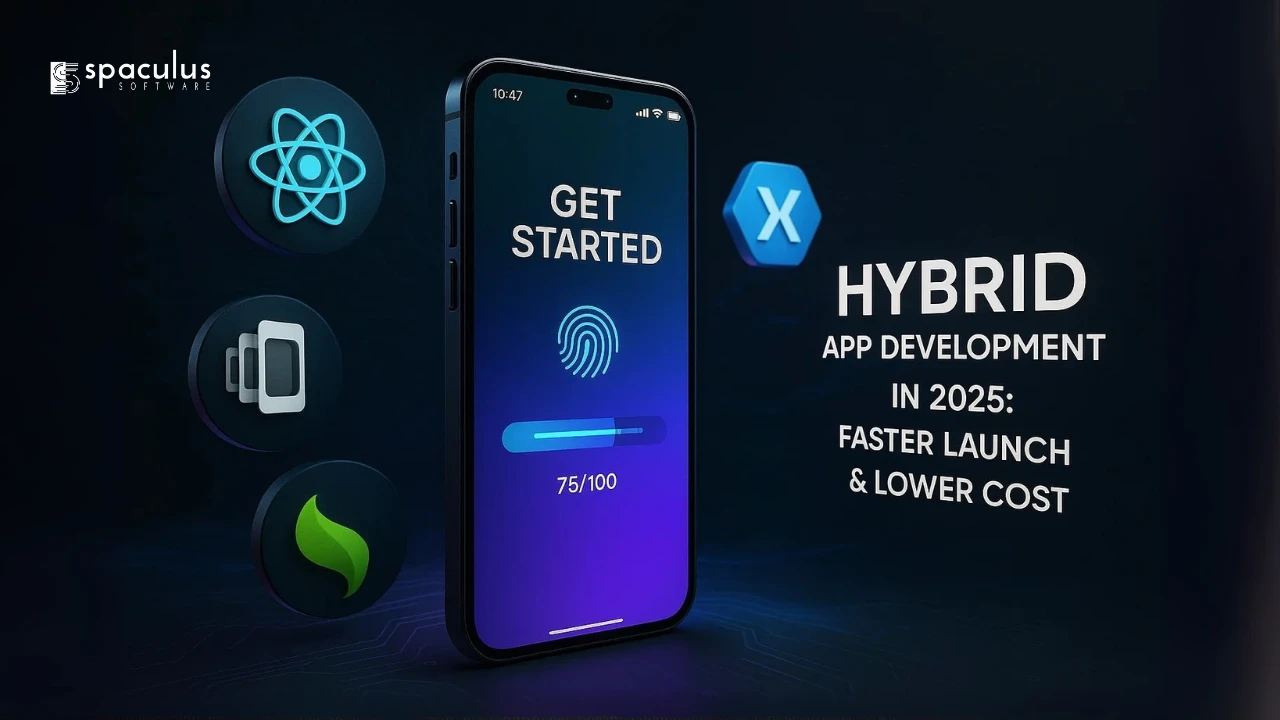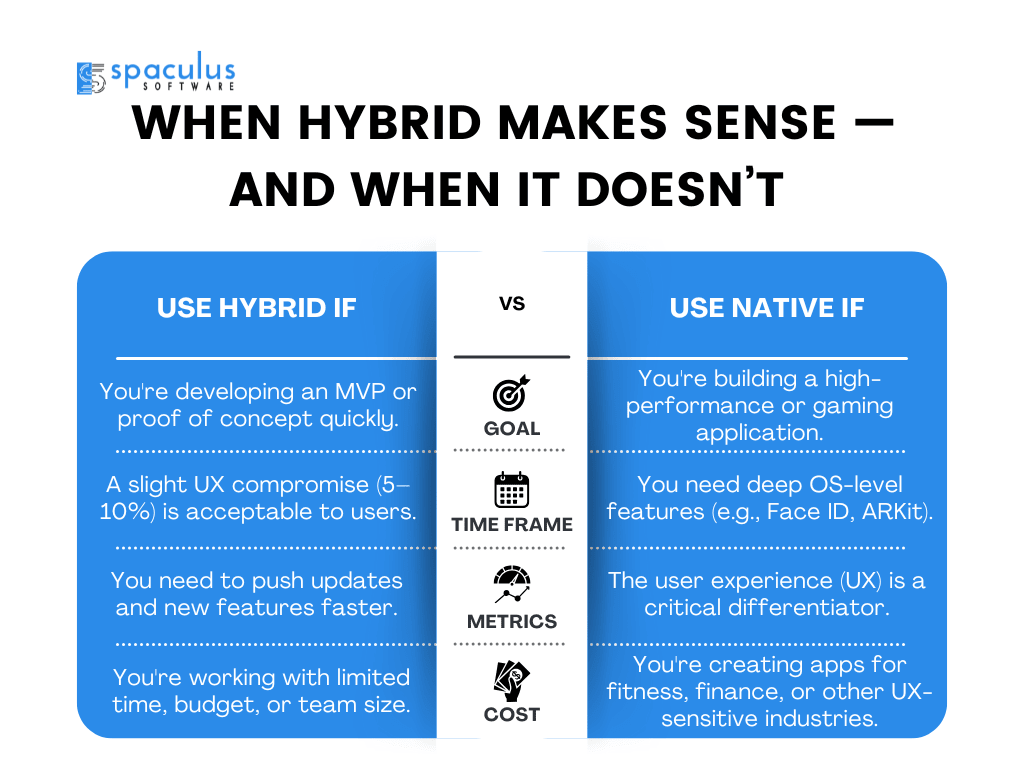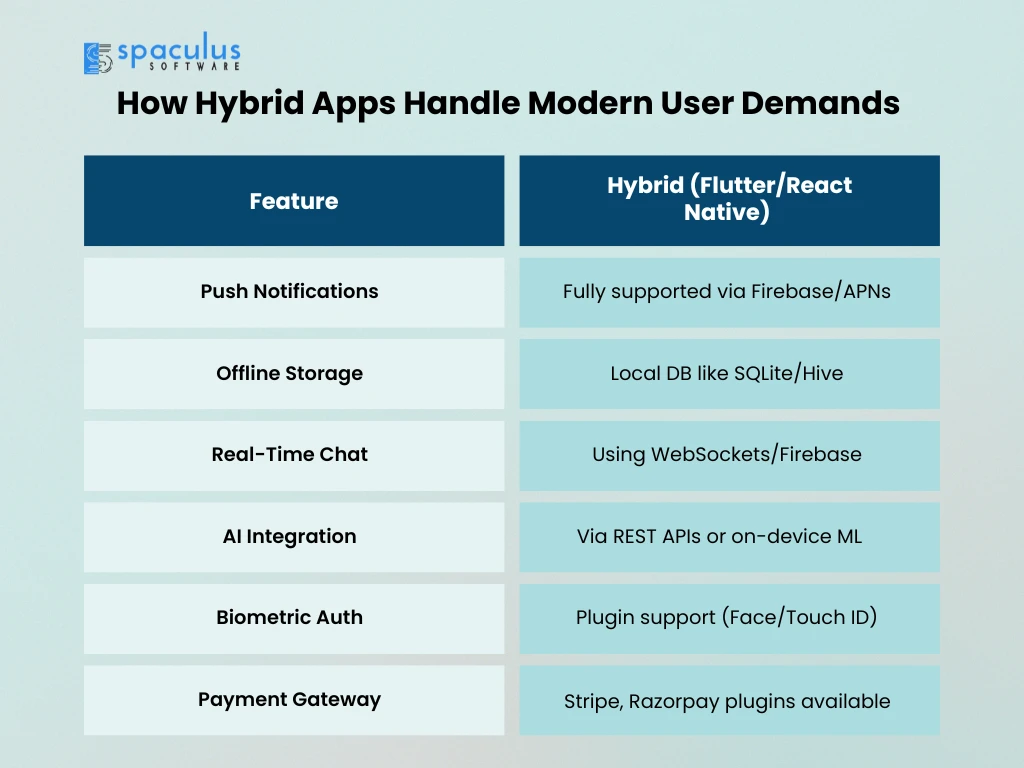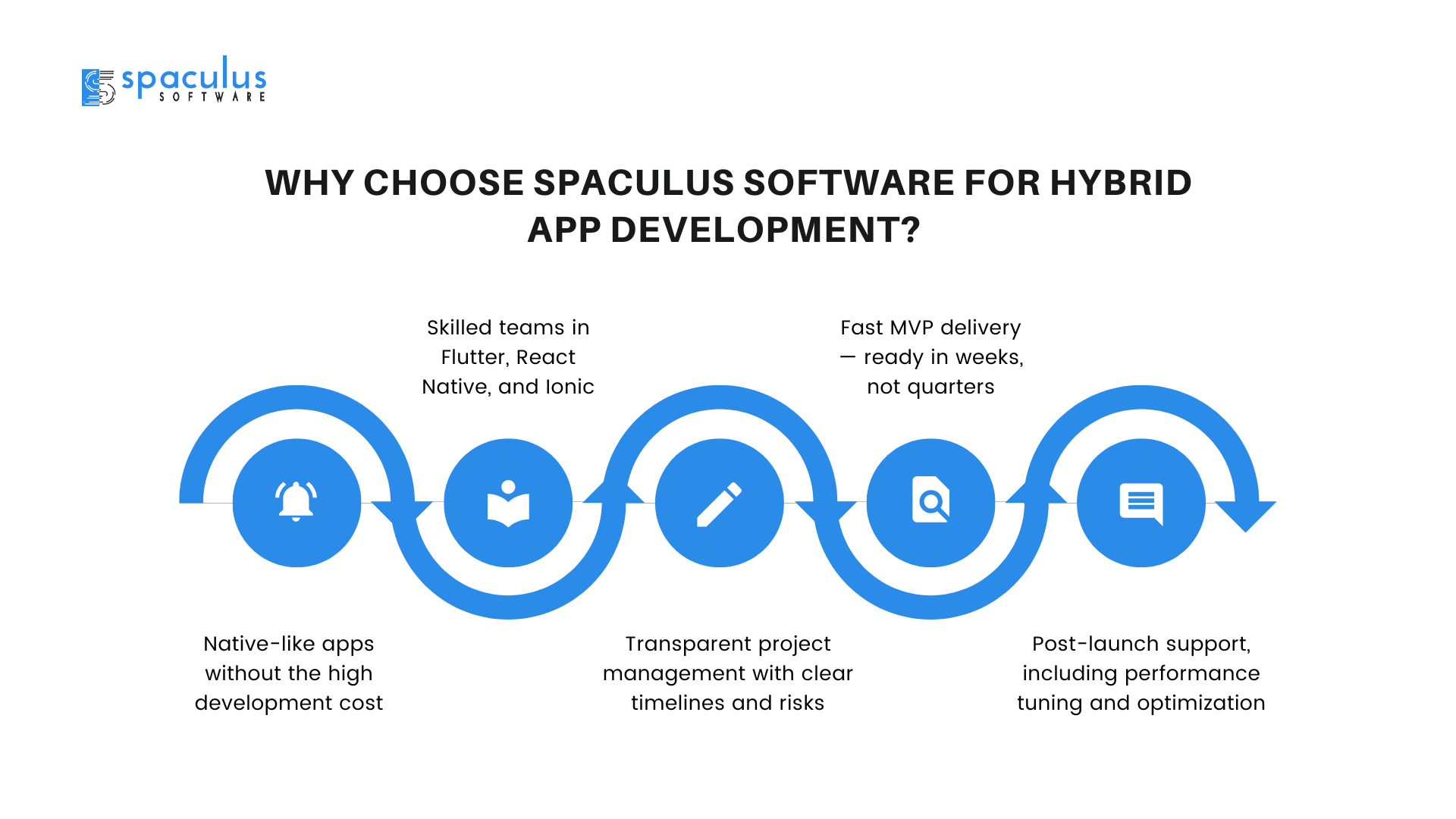
The pressure to launch is real.
So are the cost constraints.
And in 2025, decision-makers aren’t asking “What’s trendy?” — they’re asking “What works?”
That’s where Hybrid App Development Company enters the conversation.
This isn’t a fallback choice anymore — it’s a strategic one.
This blog breaks down how hybrid apps are helping tech leaders ship faster, reduce cost, and still deliver solid user experiences.
If you’re a CEO, CTO, or product head evaluating your 2025 roadmap — keep reading.
Let’s clear the air.
A hybrid app is built using web technologies (HTML, CSS, JavaScript) and wrapped in a native container to run on both iOS and Android from a single codebase.
It’s not the same as:
Popular hybrid frameworks in 2025 include:
The myth? That hybrid means “cheap and clunky.”
The reality? It now powers apps used by millions daily — think Instagram, Discord, Coinbase.
Here’s what’s changed:
Let’s break it down practically.
| Factor | Hybrid App | Native App |
| Development Speed | 40–60% faster (one codebase) | Slower (two separate apps) |
| Cost Efficiency | 30–50% cheaper overall | Higher due to dual teams |
| Maintenance | Easy updates via one system | Separate bug fixes for each platform |
| Talent Hiring | Easier (JavaScript/Flutter developers) | More specialized (Swift/Kotlin) |
| Time to Market | Ideal for MVPs & fast iterations | Slower rollout |

You don’t need the perfect app.
You need the right app for the business context.
Use hybrid if:
Use native if:
Here’s a comparative example based on actual 2025 agency rates:
| Project Type | Hybrid Approach (Flutter/React Native) | Native Approach (Swift + Kotlin) |
| Ride-hailing MVP | $28,000 • 8–10 weeks | $50,000+ • 14–16 weeks |
| Fitness Coaching App | $35,000 • 12 weeks | $60,000+ • 18–20 weeks |
| Ecommerce App | $30,000 • 10 weeks | $55,000+ • 16 weeks |
The takeaway? Hybrid gives you a faster launch runway without sacrificing core features.

You’re not just building a UI.
You’re meeting user expectations like:
Can hybrid handle this in 2025?
Yes — and here’s how.
| Feature | Hybrid (Flutter/React Native) |
| Push Notifications | Fully supported via Firebase/APNs |
| Offline Storage | Local DB like SQLite/Hive |
| Real-Time Chat | Using WebSockets/Firebase |
| AI Integration | Via REST APIs or on-device ML |
| Biometric Auth | Plugin support (Face/Touch ID) |
| Payment Gateway | Stripe, Razorpay plugins available |
Hybrid frameworks now cover 90–95% of what most apps need. The rest can be handled via custom native modules.
In 2025, tech leaders aren’t just thinking “Can we build it?”
They’re asking:
Hybrid answers yes across all three.
And with continuous delivery pipelines, hybrid apps are easier to:
Some leaders still hear “hybrid” and think:
“We don’t want a second-tier app.”
But let’s be clear — hybrid isn’t a shortcut anymore.
It’s a smart, intentional decision when:
Hybrid apps now power:
They’re performing at scale — not just surviving.
Let’s address a few real concerns from C-level execs:
| Objection | Response |
| “Will hybrid apps lag?” | Not with modern frameworks like Flutter 4 — optimized for 120Hz screens. |
| “Can we scale with hybrid?” | Yes. Big apps like BMW, Alibaba use hybrid tech. |
| “What if we need native-only features?” | Hybrid supports native plugins — or you can integrate modularly. |
| “Will we lose UI polish?” | No. You can now mirror native UI 90%+ with libraries and design systems. |
| Framework | Strengths | Ideal For |
| Flutter 4 | Fast, beautiful UI, strong community | MVPs, startups, high-performance UI |
| React Native | Reusable code, Facebook ecosystem | B2B apps, enterprise dashboards |
| Ionic + Capacitor | Web-first approach, plugin flexibility | Progressive Web Apps (PWA) |
Most agencies in 2025 now default to hybrid unless there’s a strong reason not to.
When making your tech choice, evaluate these 5 areas:
| Factor | Go Hybrid If… | Go Native If… |
| Budget | You want to control costs | Budget is not a constraint |
| Timeline | You need to launch in < 12 weeks | You have 6+ months for dev |
| Core Features | Can be built via plugins/APIs | Need AR, advanced sensors |
| Team Skillset | Strong JS/Dart talent available | Have Swift/Kotlin experts |
| Post-Launch Scaling | Want single codebase to maintain & scale | Need per-platform customization |

If you’re looking for a tech partner that speaks both business and code, here’s how we help:
Want a second opinion on your app idea or tech stack?
You don’t need the flashiest tech.
You need tech that gets the job done — fast, affordably, and reliably.
Hybrid app development in 2025 is no longer a compromise.
It’s a calculated move for leaders who want to ship confidently without overcommitting resources.
At Spaculus Software, we help forward-thinking businesses do exactly that — with hybrid apps that are built for speed, scale, and success.